Summing up:
Your approach with renaming the columns is already smart as the docs says:
Examples
Assembling a datetime from multiple columns of a DataFrame. The keys
can be common abbreviations like [‘year’, ‘month’, ‘day’, ‘minute’,
‘second’, ‘ms’, ‘us’, ‘ns’]) or plurals of the same
But there are some alternatives. In my experience the list comprehension using zip is quite fast (for small sets). With around 3000 rows of data renaming the columns becomes the quickest. Looking at the graph the penalty for renaming is hard for small set but compensates for large ones.
Alternatives
pd.to_datetime(['-'.join(map(str,i)) for i in zip(df['h3'],df['h2'],df['h1'])])
pd.to_datetime(['-'.join(i) for i in df[['h3', 'h2', 'h1']].values.astype(str)])
df[['h3','h2','h1']].astype(str).apply(lambda x: pd.to_datetime('-'.join(x)), 1)
pd.to_datetime(df[['h1','h2','h3']].rename(columns={'h1':'day', 'h2':'month','h3':'year'}))
Timings Win10:
#df = pd.concat([df]*1000)
2.74 ms ± 33.7 µs per loop (mean ± std. dev. of 7 runs, 100 loops each)
8.08 ms ± 158 µs per loop (mean ± std. dev. of 7 runs, 100 loops each)
158 ms ± 472 µs per loop (mean ± std. dev. of 7 runs, 10 loops each)
2.64 ms ± 104 µs per loop (mean ± std. dev. of 7 runs, 100 loops each)
Timings MacBook Air:
100 loops, best of 3: 6.1 ms per loop
100 loops, best of 3: 12.7 ms per loop
1 loop, best of 3: 335 ms per loop
100 loops, best of 3: 4.7 ms per loop
Update with code I wrote (happy if you have suggestions to improve or any library that could help):
import pandas as pd
import numpy as np
import timeit
import matplotlib.pyplot as plt
from collections import defaultdict
df = pd.DataFrame({
'h1': np.arange(1,11),
'h2': np.arange(1,11),
'h3': np.arange(2000,2010)
})
myfuncs = {
"pd.to_datetime(['-'.join(map(str,i)) for i in zip(df['h3'],df['h2'],df['h1'])])":
lambda: pd.to_datetime(['-'.join(map(str,i)) for i in zip(df['h3'],df['h2'],df['h1'])]),
"pd.to_datetime(['-'.join(i) for i in df[['h3','h2', 'h1']].values.astype(str)])":
lambda: pd.to_datetime(['-'.join(i) for i in df[['h3','h2', 'h1']].values.astype(str)]),
"pd.to_datetime(df[['h1','h2','h3']].rename(columns={'h1':'day','h2':'month','h3':'year'}))":
lambda: pd.to_datetime(df[['h1','h2','h3']].rename(columns={'h1':'day','h2':'month','h3':'year'}))
}
d = defaultdict(dict)
step = 10
cont = True
while cont:
lendf = len(df); print(lendf)
for k,v in mycodes.items():
iters = 1
t = 0
while t < 0.2:
ts = timeit.repeat(v, number=iters, repeat=3)
t = min(ts)
iters *= 10
d[k][lendf] = t/iters
if t > 2: cont = False
df = pd.concat([df]*step)
pd.DataFrame(d).plot().legend(loc='upper center', bbox_to_anchor=(0.5, -0.15))
plt.yscale('log'); plt.xscale('log'); plt.ylabel('seconds'); plt.xlabel('df rows')
plt.show()
Returns:

